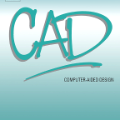The paper presents a comparative user study between an Augmented Reality-based Computer-Aided Design (AR-CAD) system and a traditional computer-based CAD modeling software, SolidWorks. Twenty participants of varying skill levels performed 3D modeling tasks using both systems. The results showed that while the average task completion time is comparable for both groups, novice designers had a higher completion rate in AR-CAD than in the traditional CAD interface, and experienced designers had a similar completion rate in both systems. A statistical comparison of task completion rate, time, and NASA Task Load Index (TLX) showed that AR-CAD slightly reduced cognitive load while favoring a high task completion rate. Higher scores on the System Usability Scale (SUS) by novices indicated that AR-CAD was superior and worthwhile for reducing barriers to entering CAD. In contrast, the Traditional CAD interface was favored by experienced users for its advanced capabilities, while many viewed AR-CAD as a valid means for rapid concept development, education, and an initial critique of designs. This opens up the need for future research on the needed refinement of AR-CAD with a focus on high-precision input tools and its evaluation of complex design processes. This research highlights the potential for immersive interfaces to enhance design practice, bridging the gap between novice and experienced CAD users.
翻译:暂无翻译




